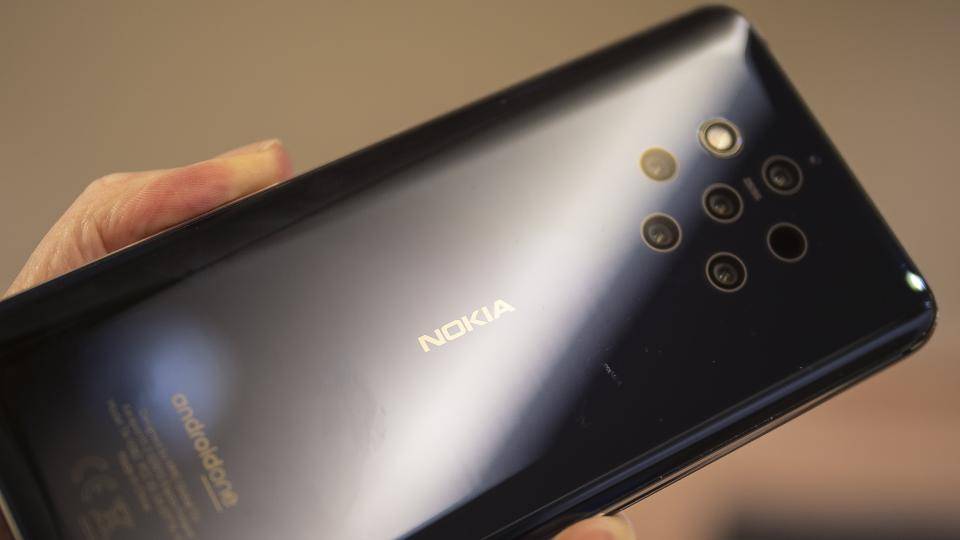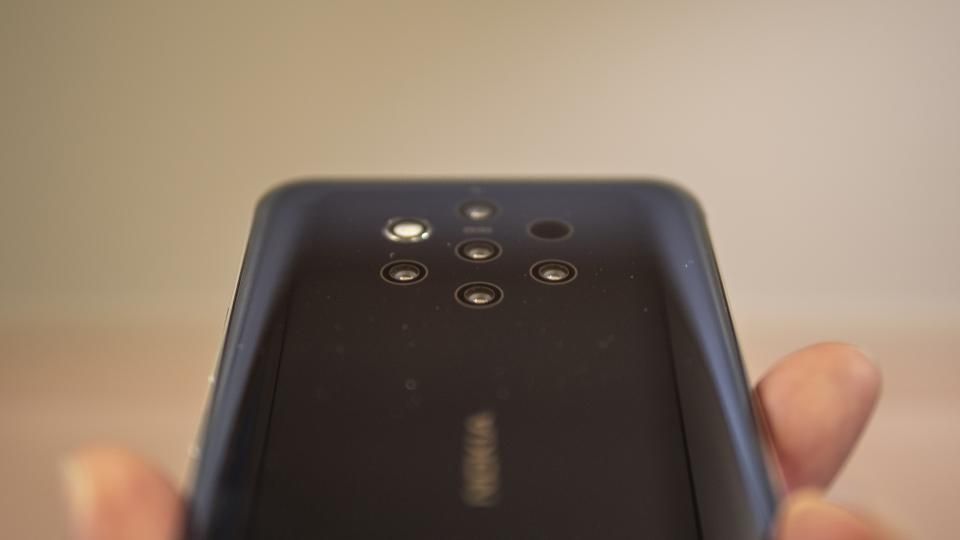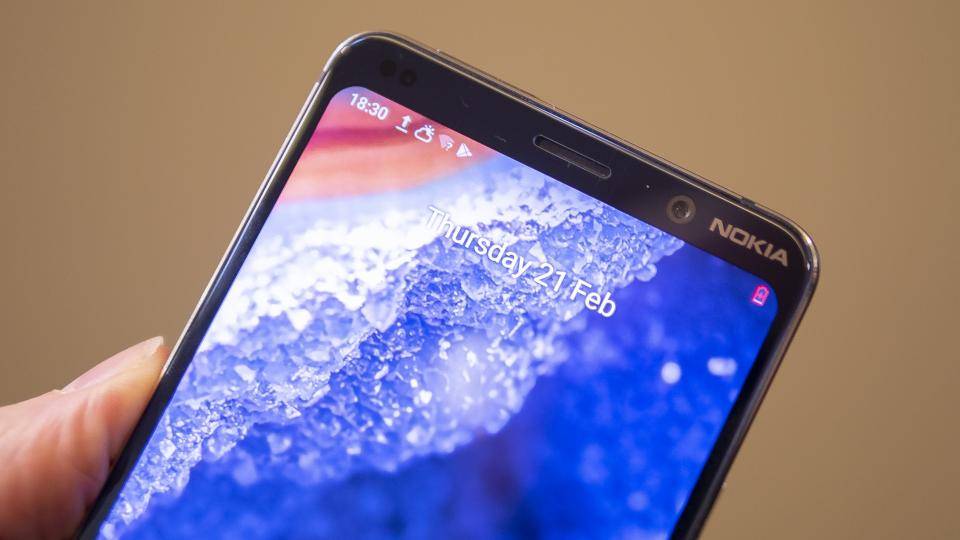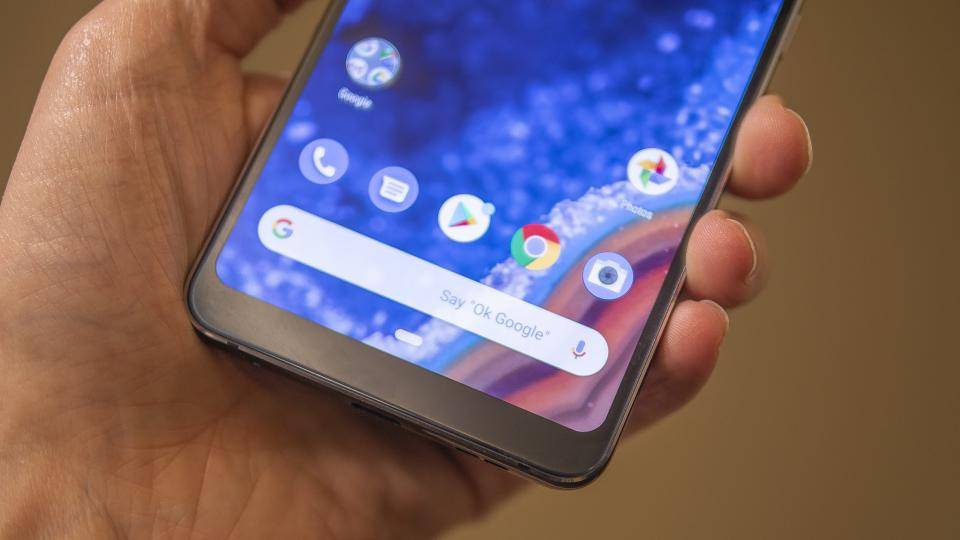You’ll see a lot of announcements about phones this week at MWC in Barcelona but I can guarantee you one thing: none will be as interesting, as crazy or downright off-the-wall as the Nokia 9 PureView.
In 2019 the Finnish smartphone manufacturer has gone all out, adding not three, or even four, but five cameras to the rear of its brand-new flagship mobile.
READ NEXT: The best smartphone you can buy
Nokia 9 PureView review: Specifications, price and release date
6in, 1,440 x 2,960 pixel (550ppi) POLED display
In-screen fingerprint reader
Octa-core Qualcomm Snapdragon 845 processor (4x2.8GHz, 4x1.7GHz)
6GB RAM
128GB storage
MicroSD support
5 x 12MP f/1.8 rear camera array (3 x colour 2 x monochrome)
Time of flight sensor for depth sensing
20MP selfie camera
IP67 dust- and water-resistant
8mm thin body
3,320mAh battery
Price: $699 US
Release date: TBC
Nokia 9 PureView review: Key features and first impressions
Those five cameras are arranged in a circular pattern on the rear of the PureView. It’s not, perhaps, the phone for trypophobics , but given how many camera modules Nokia has had to squeeze in here, I think it has done a stand-up job with the design. It looks unusual but it isn't awkward, bulky or particularly ugly.
What do all these cameras do? You might be surprised to find that they’re not there to help you get a wider angle or a zoomed-in view of your scene, as is the case with the camera arrays on other phones ( the Mate 20 Pro, for instance , or the Apple iPhone Xs ). And they're not just there for one-upmanship, either. In fact, they’re there to boost the dynamic range of the camera. That is to say, the range of light intensities from black to white, an area in which, traditionally, smartphone cameras have struggled.
Normally, a smartphone would rely on an HDR shot to get over the typically narrow dynamic range of a smartphone camera sensor, capturing many frames in quick succession at different exposure levels, then merging them to create a composite image. The Nokia 9 PureView is different. Instead of capturing those frames sequentially, it captures them all at once and it does so from a mixture of monochrome and colour cameras, improving the camera's light-gathering capabilities in the process.

In fact, every time you hit the shutter button, the phone captures at least one frame with all five of the cameras – that’s 60-megapixels worth of image data – before fusing them all to create one image. There's also an HDR mode for even greater dynamic range, where PureView captures up to four shots with each camera, delivering a mind-boggling 240-megapixels worth of image data.
The technology is similar to that developed by digital photography company Light in its crazy L16 camera , which produces hugely high-resolution images by stitching and overlapping images from an array of 16 smartphone camera modules. In fact, Nokia worked with Light on the proprietary chip that controls the capture process on the PureView's camera array, before handing off all the data for number-crunching to the phone’s own CPUs, GPU and DSP (digital signal processor).
The result of all this technical jiggery-pokery is, Nokia claims, that the PureView’s 12-megapixel, f/1.8 camera can capture a staggering maximum 12 stops of dynamic range. If correct, that’s on a par with proper cameras like the Fujifilm X-T20 or the Nikon D500 . And, since the Nokia 9 PureView saves its images in RAW (DNG) format as well as JPEG, you should be able to edit those images using applications such as Adobe Lightroom and Photoshop and retrieve similar amounts of detail as files from a DSLR or mirrorless camera. The RAW file sizes, by the way, are fairly hefty at 32MB to 50MB in size each, so you may need to budget for a microSD expansion card to hold them all.

This is seriously clever stuff and, in my view, where the smartphone photography game is heading. Nokia is ahead of the curve right now but, hopefully, other manufacturers will cotton on soon. Just imagine what Google would be able to do with similar technology. I, for one, can't wait.
That’s not the only trick up the Nokia 9 PureView’s sleeve, though. You’ll also be able to call on Nokia’s “full-view” depth-mapping to reposition the focal point after shooting and to create more convincing portrait shots than ever. Indeed, the data from the phone’s five cameras coupled with the accompanying time-of-flight depth sensor, enables the camera to produce a depth map with 1,200 layers with focal lengths from 7cm to 40m. That’s significantly superior to most smartphones, says Nokia, which are typically limited to ten or fewer layers.
Video capture is a good deal less exciting. As you might expect, the PureView can capture 4K footage, but only from one of its five cameras. There's also a reasonably well-specified selfie camera on the front, capable of capturing 20-megapixel self portraits.

Nokia 9 PureView review: Other features
It's all very exciting stuff; in fact, I'd go so far as to posit that the Nokia 9 PureView is the most exciting thing to happen to smartphone cameras since the Nokia Lumia 1020 and the Nokia 808 PureView before that. But what about the rest of the phone’s specifications? Is it up to snuff?
It certainly looks that way from the outside. The Nokia 9 PureView is clad in sleek, fingerprint-resistant glass on both the front and rear; it has a 6in AMOLED display and a slim aluminium frame sandwiched in between those layers and it looks every bit the modern flagship smartphone. There’s no notch here and, thus, there are slim bezels bracketing the screen at the top and the bottom but I don’t have a problem with this.

Other features to note include an in-screen fingerprint reader, face unlock, IP67 dust- and water-resistance, micoSD card expansion support and a 3,300mAh battery. Internally, the phone has a Qualcomm Snapdragon 845 with 6GB of RAM to back it up and 128GB of internal storage and it runs, naturally, Android 9 Pie (Android One edition). That’s the only configuration, though, and the phone is only going to be available in "Midnight Blue" to start with as well.
Nokia 9 PureView review: Early Verdict
It’s a little surprising that Nokia has chosen not to go with the latest Qualcomm chipset, the Snapdragon 855 , if only because that now precludes a 5G version of the phone coming out during its lifespan.
But I suppose you can’t have everything and, by way of compensation, the price of the phone is looking very reasonable by today’s flagship standards. Indeed, while Samsung is busy setting records for wallet-damaging prices, with its $1,980 (around £1,517) foldable flagship , Nokia has been far more accommodating with the price of the, arguably, more practical, Nokia 9 Pureview: it will set you back a mere US$699 (around £535).
That, if the camera technology actually works as advertised, could tip the balance in favour of the Nokia 9 PureView at the beginning of 2019. And while it may not have the latest chipset or the biggest display this could well be the smartphone to beat in the early part of this year.

